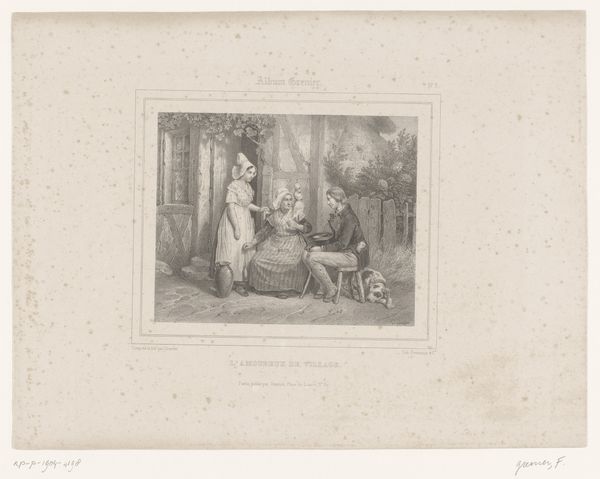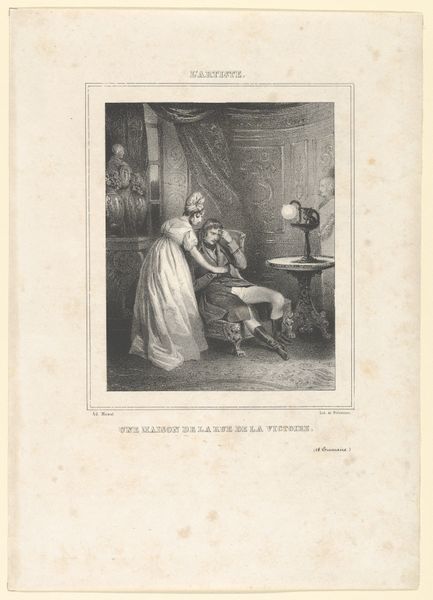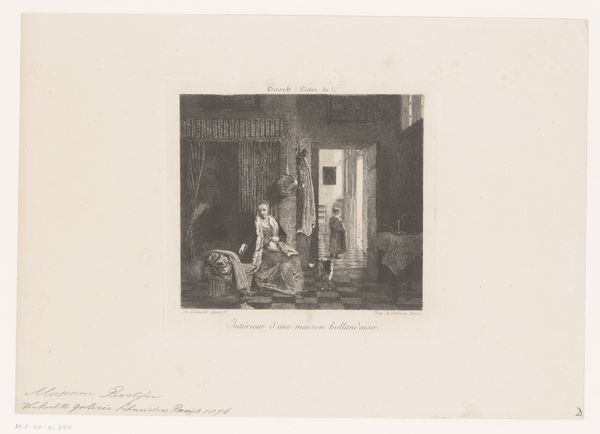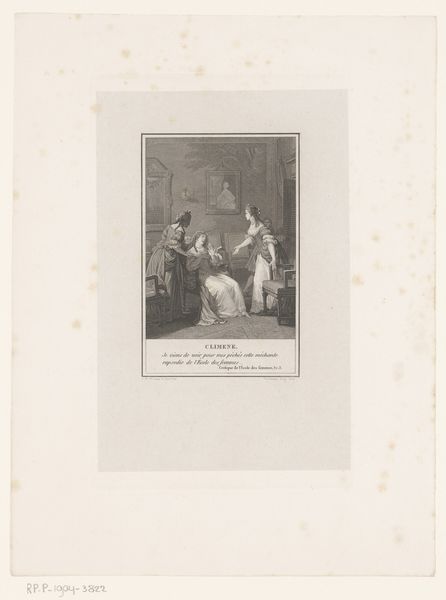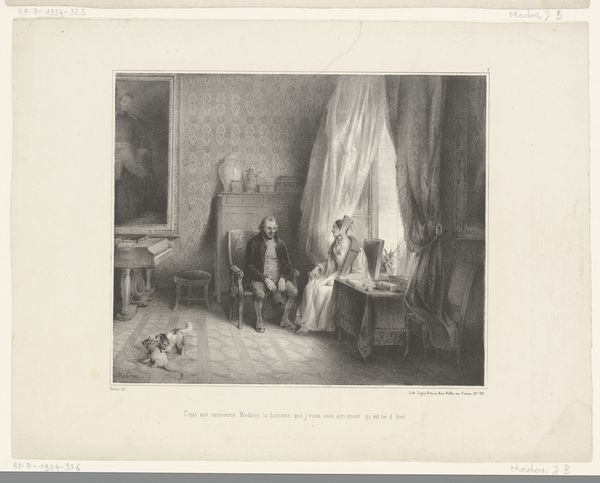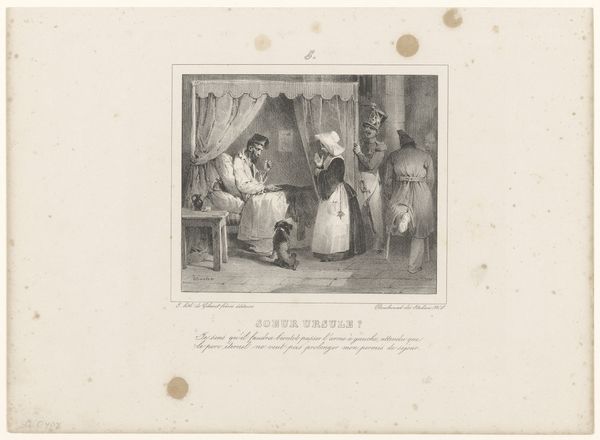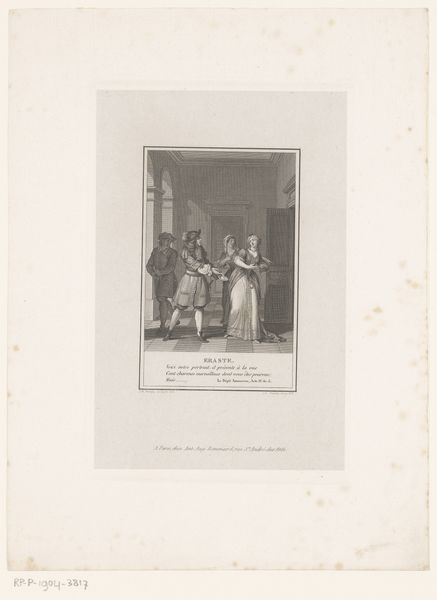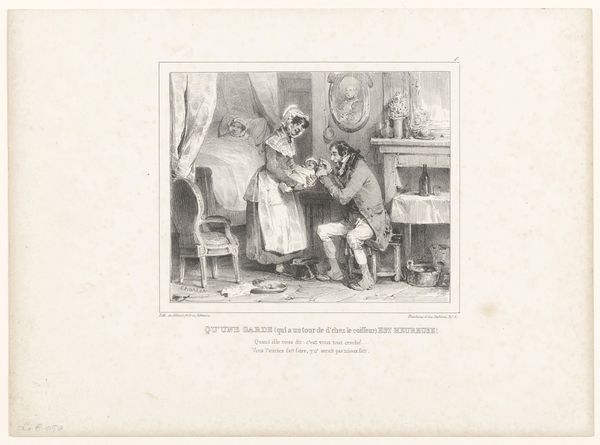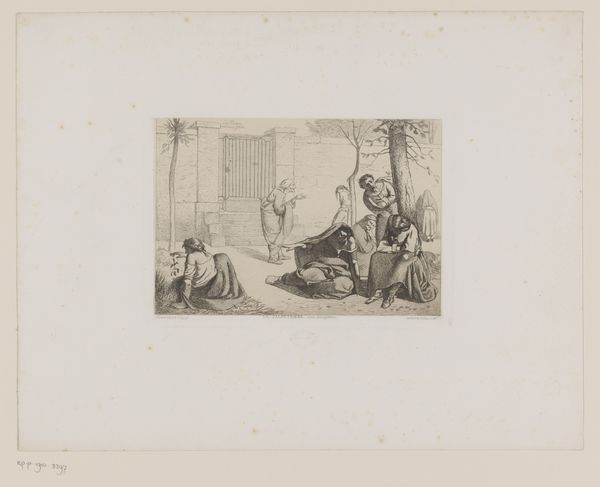
print, engraving
# print
#
romanticism
#
line
#
genre-painting
#
engraving
Dimensions: height 309 mm, width 448 mm
Copyright: Rijks Museum: Open Domain
Curator: Jules David’s 1836 engraving, “Filantroop in gesprek met een priester”—Philanthropist in Conversation with a Priest—offers an intimate look at a meeting of minds. The work on display at the Rijksmuseum presents an interior scene rendered in delicate lines. What’s your first take on it? Editor: Stark contrast, definitely. The somber mood really strikes me, especially considering the suggested topic of "philanthropy." Is it intended to highlight tension between charitable ideals and the structures of religious power? Curator: Well, David was a printmaker producing images for mass consumption, and prints like these served a burgeoning middle class hungry for depictions of social life. The meticulous detail—see how each line is laid—speaks to the time and skill involved in its production. These images were reproduced, circulated, and consumed. Editor: I see how the print’s accessibility played a part. Looking closer, the contrast in attire stands out – one in darker, simpler garb versus the other in a more elaborate coat, subtly pointing to societal divides and challenging notions of charity within that power structure. Are we meant to question the motives here? Curator: That reading could be valid. The use of engraving also suggests a conscious effort to emulate traditional art forms while democratizing access. How does reproducing these scenes engage with traditional art hierarchies? Is it subversive or reinforcing? Editor: Subversion can operate at many levels. The artist chooses to depict, reproduce, and circulate an otherwise closed interaction, creating room for a wider reflection on charity and its effects. The very choice of subject feels like a conversation starter regarding power, class, and benevolence during that era. Curator: Interesting point. The materials themselves – the paper, the ink, the press – locate it firmly within an emerging industrialized culture, offering images as commodities to be purchased and exchanged. And this changed art-making entirely. Editor: Exactly, thinking about mass distribution expands my understanding of social commentary and engagement beyond the art world to larger movements concerning equality, social responsibility and moral expectations of wealthy elites. Curator: Thank you for those layered contextual considerations. Looking back now, I see it slightly differently myself, in part, to what you highlighted regarding tension. Editor: It’s fascinating how a look into historical context allows for a modern reading of societal patterns of thought. Let's take what we've learned here with us as we go forward.
Comments
No comments
Be the first to comment and join the conversation on the ultimate creative platform.
